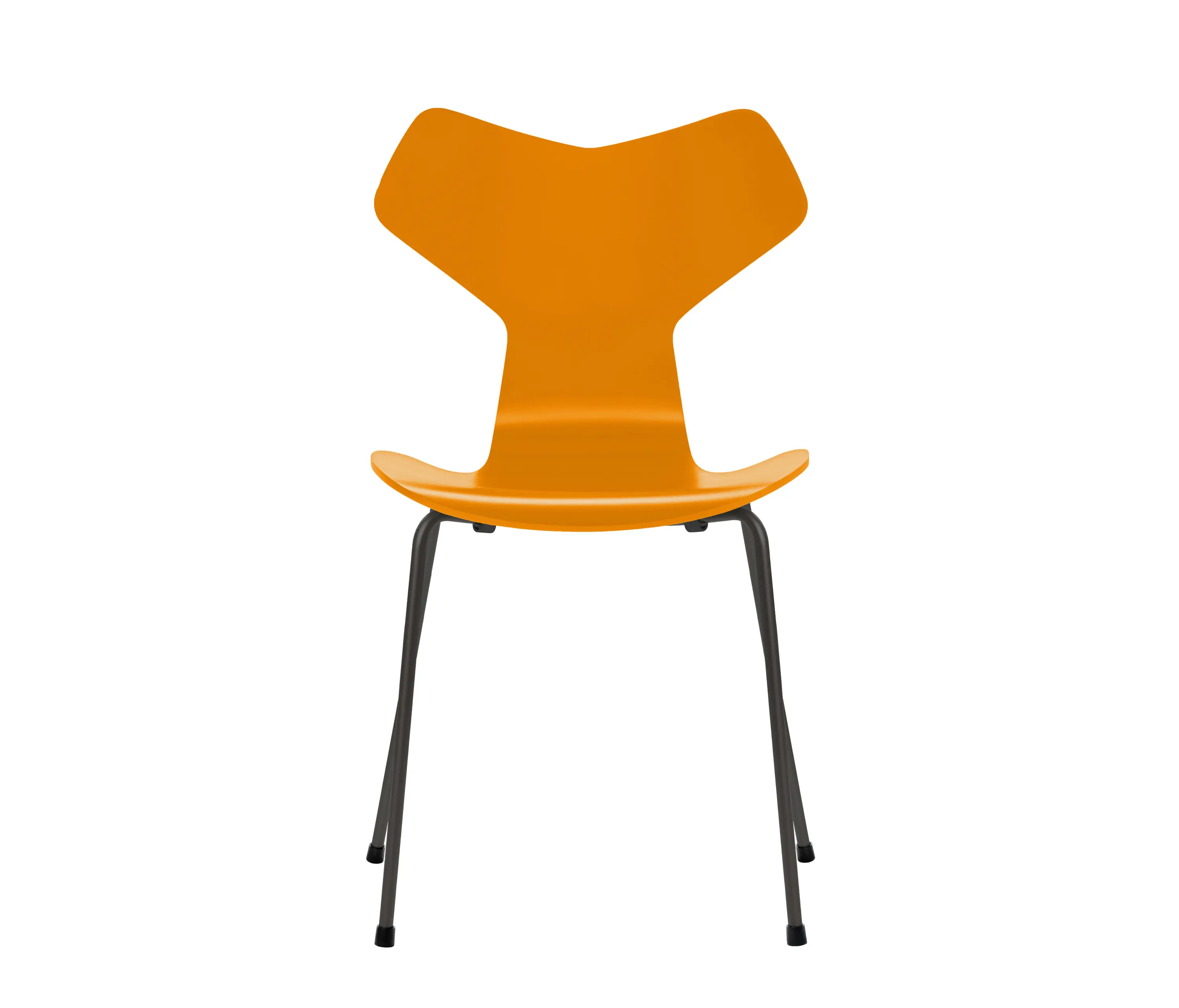


About this product
Architonic ID: 20149962
SKU: 3130
Year of Launch: 1957
Height: 83cm/ 32.7"
Width: 48cm/ 18.9"
Depth: 51cm/ 20.1"
Seat height: 46cm/ 18.1"
Stackable: Yes
Number of chairs stacked: 5
Concept
The Grand Prix™ chair is a chair with graphic edge. It was introduced at the Designers’ Spring Exhibition at the Danish Museum of Art & Design in 1957. Later that year, the chair was displayed at the Triennale in Milan where it received the Grand Prix, the finest distinction of the exhibition. The celebrated chair comes in both a steel or wood base and can be customised through a series of colours, wood types and upholstery.
This product belongs to collection:
Base metal, Metal, Seat engineered wood, Wood
Variants have detail pages to discover
You can visit the product page for these variants—just click on them!

Grand Prix™ | Chair | 3130 | Black coloured ash | Black base

Grand Prix™ | Chair | 3130 | Black coloured ash | Brown bronze base

Grand Prix™ | Chair | 3130 | Black coloured ash | Chrome base

Grand Prix™ | Chair | 3130 | Black coloured ash | Nine grey base

Grand Prix™ | Chair | 3130 | Black coloured ash | Silver grey base

Grand Prix™ | Chair | 3130 | Black coloured ash | Warm graphite base

Grand Prix™ | Chair | 3130 | Black coloured ash | White base

Grand Prix™ | Chair | 3130 | Black lacquered | Black base

Grand Prix™ | Chair | 3130 | Black lacquered | Brown bronze base

Grand Prix™ | Chair | 3130 | Black lacquered | Chrome base

Grand Prix™ | Chair | 3130 | Black lacquered | Nine grey base

Grand Prix™ | Chair | 3130 | Black lacquered | Silver grey base

Denmark
Arne Jacobsen was one of the most accomplished Danish designers and architects of the 20th century. His distinctly elegant style married the efficiency and clean lines of modernism with sensuous, organic forms found in nature. Biography Arne Jacobsen Arne Jacobsen was born in Copenhagen in 1902. Originally, he began an apprenticeship as a stonemason, but decided instead to study architecture at the Royal Danish Academy of Fine Arts in Copenhagen, which he successfully graduated from in 1927. One of Jacobsen’s first projects was a ‘House of the Future’, with a helicopter landing pad on the roof, which he designed together with Flemming Lassen. He also designed several larger projects, such as the Bellavista housing estate in Klampenborg. In 1942, Arne Jacobsen and Erik Moller won an architectural competition to design the City Hall of Aarhus, working together with the designer Hans J Wegner. Between 1956 and 1960, he worked on the SAS Royal Hotel (now the Radisson Blu Royal Hotel) in Copenhagen. The building was conceived as a total work of art, and the three architects designed every detail, from the Egg Chair and the Swan Chair, which owe their iconic status to their seductive, organic forms, down to the cutlery in the building. In 1956, he became a professor at the Royal Danish Academy of Fine Arts. The Munkegård school in Genofte, the Toms factory in Ballerup, the Danish National Bank and the Sports Hall in Landskrona, were all pioneering works of Scandinavian modernism designed by Jacobsen. Some of Jacobsen’s international projects, such as the school building for Christianeum in Hamburg and the Danish Embassy in London were only completed after his death in 1971. Designs by Arne Jacobsen Jacobsen designed furniture, textiles, cutlery and wallpapers among other things, but his most famous projects are his chairs. His 1952 Ant Chair, together with his later Series 7 Chair became some of the most commercially successful designs ever produced. Jacobsen's work is influenced by the iconic architecture and furniture of Le Corbusier and Ludwig Mies van der Rohe. In his quest for perfection, he was not afraid to investigate new and even radical ideas. He always worked to produce objects industrially, while imbuing them with a certain handmade quality; an approach that became the hallmark of modern Danish design. Jacobsen’s Swan Chair Designed for the lobby and lounge of the SAS Royal Hotel, Jacobsen's Swan Chair of 1956 is deemed by many to be a true turning point in furniture design. Inspired by the bird’s elegant, soaring wings, the innovative design abandons straight lines in favour of sweeping curves and organic forms. The chair's sensuous sculptural qualities and bold colours epitomise the optimism of the 1960s. The Swan Chair was first produced by the Danish manufacturer Fritz Hansen, who continue to produce it to this day. Egg Chair Like the Swan Chair, the Egg Chair was also designed for the SAS Royal Hotel in Copenhagen. The armchair's generous size means it was used to furnish the hotel's lobby. The Egg Chair's restrained form is made seductive by the organic shapes reminiscent of an oval eggshell. Because of its unique, comfortable design, it is one of the most popular chair designs of the 20th century, and continues to be manufactured today by Fritz Hansen. © by Architonic
Explore ideas for this product and beyond

Show more


More from Grand Prix™ family
More from Fritz Hansen
Continue exploring
Subscribe to the world's best architecture and design newsletter
And get exclusive access to the latest news and projects, carefully curated by the world’s most renowned editors.
By entering your email address, you agree to receive Architonic messages, promotions, other commercial messages. You can view our Privacy Policy here and you may unsubscribe at any time.











